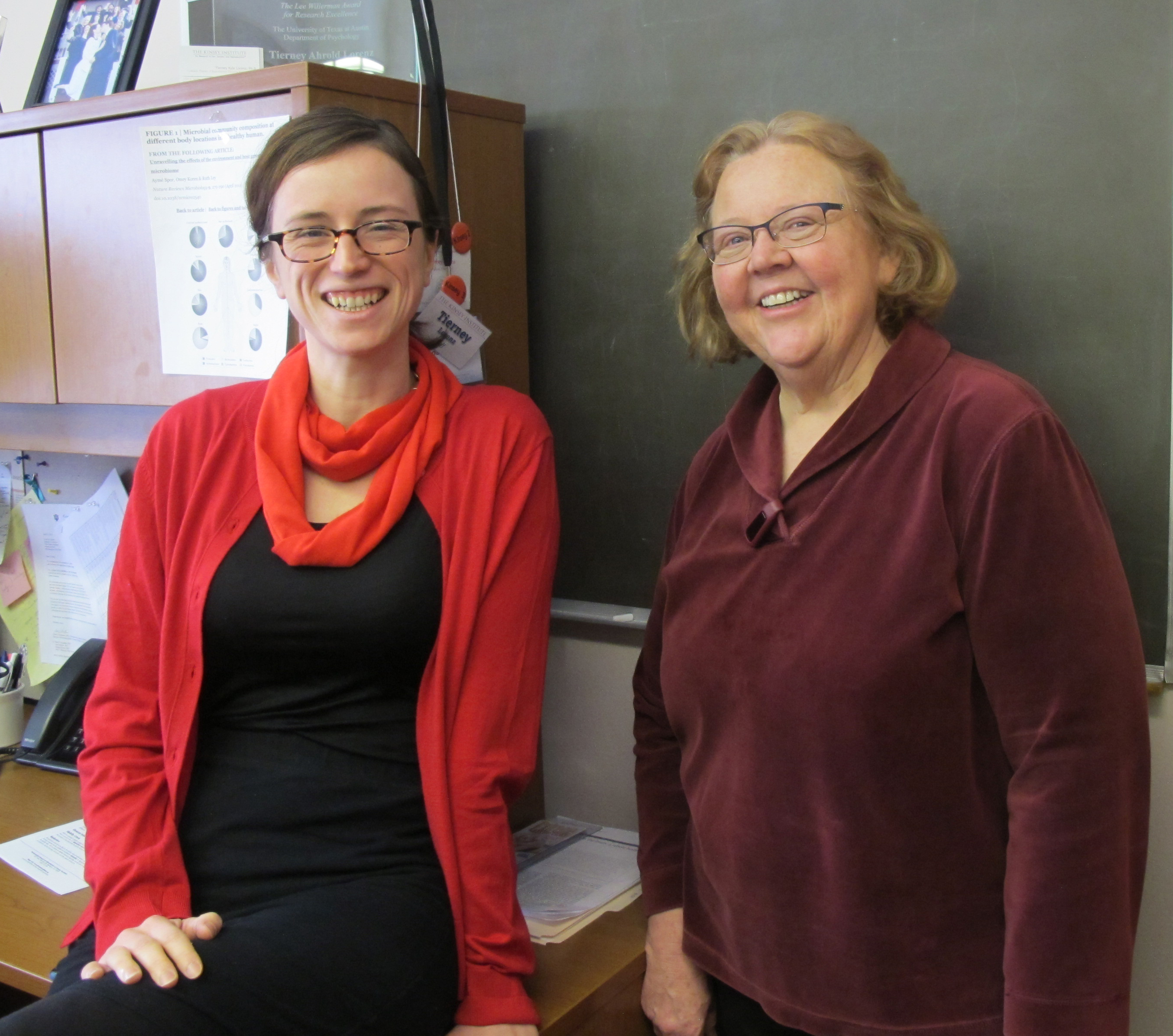How Do the Immune and Reproductive Systems Interact?

Two studies by Kinsey Institute researchers, one in Indiana led by Tierney Lorenz, and one in the highlands of Bolivia led by Virginia Vitzthum, are changing the way scientists think about the dynamic interactions between the immune and reproductive systems, and how sexual activity and environmental conditions contribute to this interplay. The two studies looked at different components of the immune system in women living in dramatically different environments, yet sharing the same fundamental biological constraints on reproducing successfully while defending a woman's body against disease and injury.
The WISH (Women, Immunity, and Sexual Health) study in Indiana demonstrated that sexually active women, unlike abstinent women, experience marked changes in antibodies and other immune cells over the course of the menstrual cycle. These changes are greatest at mid-cycle, when ovulation typically occurs. The kinds of changes that the researchers documented would make it more likely that sperm or embryo could survive without attack from the immune system, allowing pregnancy to occur.
Now, new findings from a study of Bolivian women show that elevated inflammation, a first-line "rapid responder" in the immune system's defense arsenal, reduces the chance of ovulation, thereby eliminating the possibility of conception in that cycle regardless of sexual activity. In those cycles in which ovulation does occur, sexual activity is associated with a dampening of inflammation at mid-cycle, a shift that, much like the immune changes observed in Indiana women, increases the chances of conception.
These observations have important and immediate clinical implications for assessing the risk of cardiovascular disease (CVD) and for improving the chances of conception.
First, inflammation levels in the Bolivian women were assessed by measuring CRP (C-reactive protein), an immune biomarker that is widely used worldwide to evaluate risk of damage to the heart and vascular system, leading to CVD. However, current clinical practice does not take into account a patient's cycle day or sexual activity when measuring and evaluating CRP, omissions that can lead to incorrect assessments of CVD risk.
As explained by Dr. Lorenz: “In other words, if a sexually active, premenopausal woman came in for a checkup at menses, her doctor might find her risk of heart disease to be high, but two weeks later it would be considered to be low. Many doctors use CRP to evaluate whether or not to start patients on medications to prevent CVD – so these fluctuations could be the difference between walking out of a yearly checkup with a costly (and potentially unnecessary) prescription or a clean bill of health. ”
Second, for heterosexual couples attempting to conceive, frequent sex may not be enough in the face of high inflammation. In these Bolivian women, elevations of CRP only lasted for three days or less. Such rises were associated with an increased risk of not ovulating if they occurred early in the cycle, but not if they occurred late. Furthermore, late occurring inflammation had no effect on the probability of ovulation in the subsequent cycle.
Dr. Vitzthum emphasized that "the inflammation does not have to be very high or last long for ovulation to be suppressed. However, the timing of the rise in inflammation is important. Therefore, anti-inflammatory treatments (for example, changes in diet) are likely to be most effective early in a cycle, but may not be particularly helpful for anovulation-related infertility if done later in the current cycle."
As well as the clinical relevance, the Bolivian study sheds new light on scientific debates and common misconceptions.
It is far from settled on how and why CRP and other immune biomarkers will vary across human populations with different lifestyles. Intriguingly, despite greater exposure to pathogens and fewer resources, these Bolivian women had lower CRP than U.S. women. Furthermore, the poorest Bolivian women had lower CRP than the better-off Bolivians.
"Modern lifestyles come at a cost," notes Dr. Vitzthum. "These patterns strongly suggest that the biology of women and men in industrialized populations are not necessarily ideal standards for the human species. To the contrary, chronically higher inflammatory responses, reflected in higher CRP, are likely contributing to elevated CVD and infertility in wealthier nations."
Second, there's the widespread notion that natural selection always favors reproduction at virtually any cost to an organism. But that view neglects the necessity in mammals, especially humans, of having a healthy mom to take care of the offspring. This means that sometimes selection favors not reproducing. "Our finding that short-term early-cycle inflammation can prevent ovulation is a terrific example of the biological mechanisms that make it possible to adjust reproductive effort downward in favor of ramping up immune defenses to protect a woman's body. As is always the case in evolution, and in so much of life, it's about trade-offs," explains Dr. Vitzthum.
The Bolivia study is a multidisciplinary cross-institutional collaboration supported at various stages by the National Science Foundation, the National Institute of Child Health and Human Development, and the National Institute for Mental Health.
Tierney Lorenz is a visiting research scientist at the Kinsey Institute, Virginia Vitzthum is senior scientist at Kinsey, and professor of anthropology at IU, and Carol Worthman is professor of anthropology at Emory University.
Lorenz, T. K., Worthman, C.M., & Vitzthum, V.J. (2015). Links among inflammation, sexual activity and ovulation: Evolutionary trade-offs and clinical implications. Evolution, Medicine, and Public Health, Volume 2015, Issue 1: 304-324.
Support Kinsey
Love is more than an emotion. It is essential to our individual and collective well-being. Your support will help the Kinsey Institute advance research and education in the science of love and give a diverse field of researchers the resources they need to make new discoveries.
Pledge your support